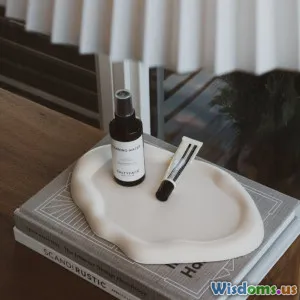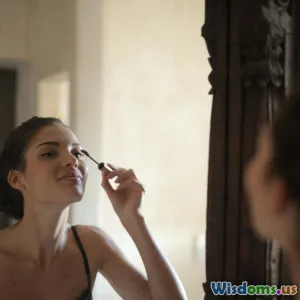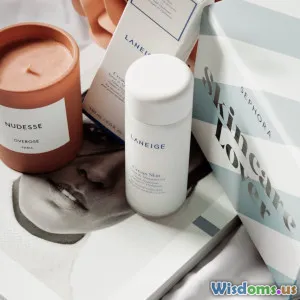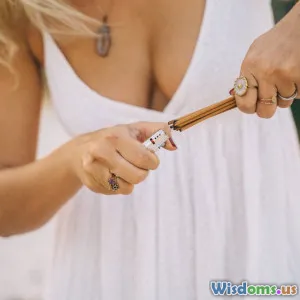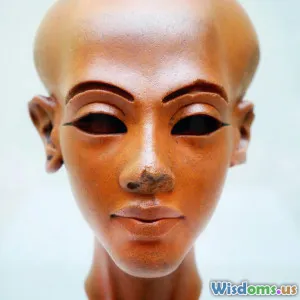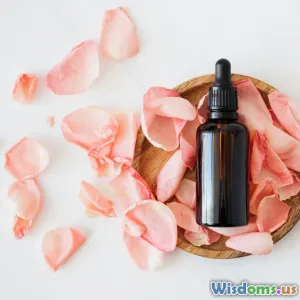
Essential Oils and Ancient Beauty Practices
8 min read Explore the timeless allure of essential oils in ancient beauty rituals and how they shape modern skincare today. (0 Reviews)
Essential Oils and Ancient Beauty Practices: Timeless Secrets
Throughout history, beauty and wellness have been intertwined, with many cultures turning to nature’s bounty to enhance and preserve their appearance. Among the potent gifts from the natural world, essential oils hold a revered position. These concentrated extracts from plants transcend time, embodying not only fragrant aromas but therapeutic and beautifying powers. This article delves deep into how essential oils were integral to ancient beauty practices and offers insights into their enduring usage in modern skincare.
The Historical Nexus Between Beauty and Essential Oils
Origins and Early Uses
Essential oils date back millennia. Archaeological evidence reveals that ancient Egyptians utilized aromatic oils in both cosmetics and rituals. For instance, frankincense and myrrh, prized in Egypt, transcended their spiritual significance to become cornerstones in skin care — their antimicrobial properties helping preserve skin integrity in a hot desert climate.
Similarly, the Indian subcontinent relied heavily on sandalwood and jasmine oils in Ayurvedic practices. These oils were carefully extracted and blended into unctions and balms, used not only for aesthetic purposes but also for promoting mental well-being, highlighting a holistic approach to beauty.
The Greeks and Romans elevated the use of essential oils further by integrating them into their bathing rituals. Olive oil infused with lavender or rosemary was rubbed into the skin to moisturize and combat aging, illustrating an early understanding of botanical benefits.
Cultural Significance
Essential oils carried symbolic meaning beyond their skin-enhancing properties. In Chinese medicine, for example, essential oils linked with qi energy and harmony were applied to maintain facial balance and health. The sensory experience offered by these oils — scents, textures, and rituals — played a key psychological role, nurturing self-esteem and social status.
Egyptian queens like Cleopatra reportedly soaked in baths containing essential oils such as rose and neroli to maintain a youthful complexion and captivate attention during elaborate social gatherings.
Essential Oils: The Basics and Biological Impact on Skin
What Are Essential Oils?
Essential oils are volatile, aromatic compounds extracted from plants, flowers, roots, and bark typically via steam distillation or cold pressing. Unlike carrier oils (like jojoba or almond oil), they are highly concentrated and require dilution before topical application.
Skin Benefits Backed by Science
Many essential oils contain antioxidants, anti-inflammatory compounds, and antimicrobial agents, which impact skin in diverse ways:
-
Tea Tree Oil: Originally cultivated by indigenous peoples of Australia, tea tree oil exhibits potent antiseptic properties, effective in combating acne-causing bacteria.
-
Lavender Oil: Widely studied for its soothing effects, lavender can reduce redness, calm eczema symptoms, and even promote skin healing post-inflammation.
-
Rosehip Oil: Rich in vitamin C and essential fatty acids, this oil has been scientifically shown to support collagen synthesis and repair sun-damaged skin.
These examples underscore how ancient selections based on trial and error find modern validation through clinical studies.
Ancient Beauty Rituals Featuring Essential Oils
Egyptian Facial Care
The Egyptians developed complex formulations combining essential oils with natural ingredients such as honey and milk. An illustrative example is the use of jasmine oil mixed with aquamarine powder and crushed herbs, creating exfoliants and moisturizers that contributed to radiant skin.
Indian Ayurdvedic Formulations
Ayurveda prescribed personalized regimes using sesame or coconut oil infused with turmeric, neem, and sandalwood. These preparations balanced doshas (biological energies) and tackled skin conditions naturally, showing a deep-rooted method connecting body and mind wellness.
Greco-Roman Baths
At public baths, fragrant oils were an essential element post-scrubbing. Anointing oneself with oils such as myrtle or bay laurel not only scented the body but protected skin from environmental exposure, revealing an advanced approach to hygiene and grace.
Essential Oils in Modern Fashion & Beauty
Revival in Contemporary Skincare
The eco-conscious wave has renewed interest in essential oils that prioritize sustainability and natural ingredients. Skincare brands now craft serums, creams, and masks infused with oils like neroli, frankincense, and chamomile, calling upon traditions while delivering scientifically supported benefits.
Incorporating Essential Oils Into Your Routine
Adopting ancient-inspired beauty practices today is straightforward:
- Dilute essential oils in carrier oils before applying to the face.
- Use them as natural fragrances to avoid synthetic chemicals.
- Incorporate in relaxation rituals like facial steaming or massage to amplify efficacy and overall skin health.
Safety Note
Despite their benefits, essential oils can cause sensitivities. A patch test is critical before full application, and consultation with a dermatologist is recommended for those with sensitive or allergy-prone skin.
Conclusion: Unlocking Ancient Wisdom for Modern Beauty
Essential oils offer more than pleasant aromas—they are a timeless bridge between ancient beauty customs and the scientifically enlightened self-care of today. The multifaceted use of these oils, from preservation to spiritual symbolism, showcases humanity's perennial quest for harmony and radiance.
By understanding and respecting their origins and properties, we gain both cultural appreciation and practical avenues to enrich our beauty routines naturally. Embracing ancient essential oil wisdom empowers us to nurture not just our skin, but a holistic connection to wellness and tradition.
Incorporate these lush elixirs mindfully, and you become a part of an enduring legacy of beauty — one drop at a time.
References
- "The Healing Power of Essential Oils" by Eric Zielinski, D.C.
- "Scent and Chemistry: The Molecular World of Odors" by Günther Ohloff
- Studies published in Journal of Cosmetic Dermatology and International Journal of Aromatherapy
- Historical records from Egyptian texts & Ayurvedic classics
Rate the Post
User Reviews
Popular Posts










